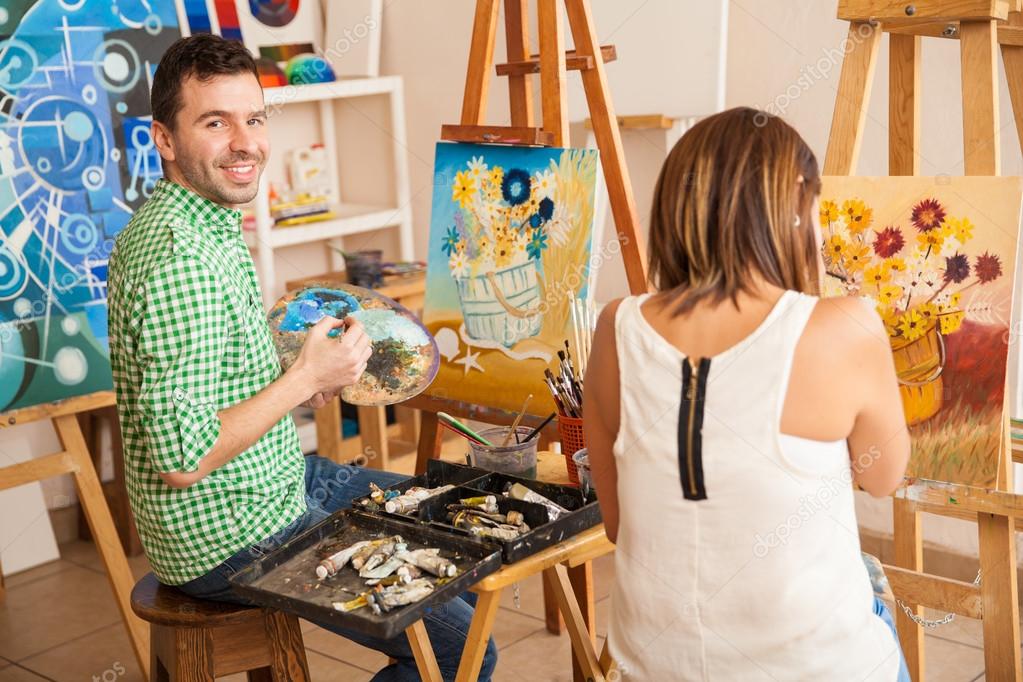Photo-Based Painting Techniques for Photographers
Photo-based painting techniques offer both a historical and cutting-edge method for professional photographers to expand their artistic repertoire. These techniques allow photographers to transform their images into stunning paintings, adding a unique touch to their work and allowing endless creative possibilities. In this article, we will delve into the mysterious world of photo-based painting techniques, examining their history, the processes involved, and how they provide an exciting intersection between photography and traditional painting.
Could photo-based art dominate the creative scene? Dive into this exploration to understand how photographers can utilize these methods to enhance their artistic expressions.

The Roots of Photo-Based Painting
The history of photo-based painting techniques is both fascinating and diverse. From the early days of photography, artists have sought ways to merge the mediums of photography and painting. This synergy has led to a renaissance of creativity, with photographers experimenting with methods to convey emotion and depth, some of which were previously thought exclusive to the painting world. For a deeper historical insight, visit this history of photo-based painting.
Getting Started with Photo-Based Techniques
The basics of starting with photo-based painting techniques involve understanding the skills needed to translate a photograph into a painting. While the initial step includes selecting a suitable photograph, the core is learning how to apply painting techniques that add texture and a personalized touch to the image. Detailed guidelines on initiating these practices can be found on how to paint from a photograph.
Choosing the Right Software
Many modern photo-based artists use digital software that mimics traditional painting techniques. Selecting software that offers a wide variety of brushes, textures, and layers can be crucial for achieving the desired effect. Popular programs include Adobe Photoshop, Corel Painter, and various tablet-based applications that allow for intuitive and dynamic interactions with your digital canvas.
Incorporating Personal Style
Your individual artistic flair plays a vital role in distinguishing your work. Each photographer should strive to infuse personal elements or unique styles, perhaps choosing palettes or motifs that resonate with their identity or portfolio. If you're curious about how different artists achieve this, you may find is it cheating to paint from a photo? a compelling read.
The Artistic Intersection
A significant appeal of photo-based painting techniques is their power to blur the lines between media, providing a unique perspective that neither pure photography nor painting can achieve alone. This intersection creates an innovative space where photography can be adapted into a painterly representation, resulting in creations that are truly one-of-a-kind.
To explore more about this creative blend, check out the difference between painting and photo-based art.
Overcoming Common Pitfalls
One challenge is avoiding the mere replication of the photo without deeper artistic interpretation. It's crucial to move beyond surface-level detail and add narrative or emotional gravitas. How to avoid the pitfalls offers insights into ensuring that the transformation from photo to painting isn't superficial but adds value.
Conclusion: The Future of Photo-Based Techniques
As technology continues to evolve, photo-based painting techniques will likely become even more refined and accessible, allowing photographers to continually push boundaries and redefine the medium. Embracing these techniques can provide an edge in artistic expression, creating artworks that captivate and inspire. For those interested in exploring further, the world of digital photo painting offers abundant resources and inspiration.

FAQ Section
What are the basic tools needed for photo-based painting?
To start with photo-based painting techniques, you typically need a digital device such as a tablet or a computer with suitable software like Adobe Photoshop or Corel Painter. Traditional methods might require physical tools like brushes and canvases.
How can one maintain originality in photo-based paintings?
Experimenting with different styles, color schemes, and artistic interpretations can help maintain originality. Infusing your personal narrative or a unique visual twist will also set your work apart.
Is there a difference between photo-based art and digital painting?
Photo-based art often starts with a photographic base and leans towards realism or abstraction of the original image. Meanwhile, digital painting might begin on a blank digital canvas, with emphasis on creating new subjects and concepts from scratch.

